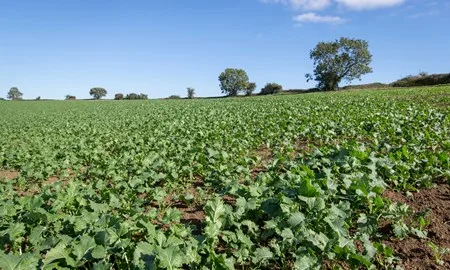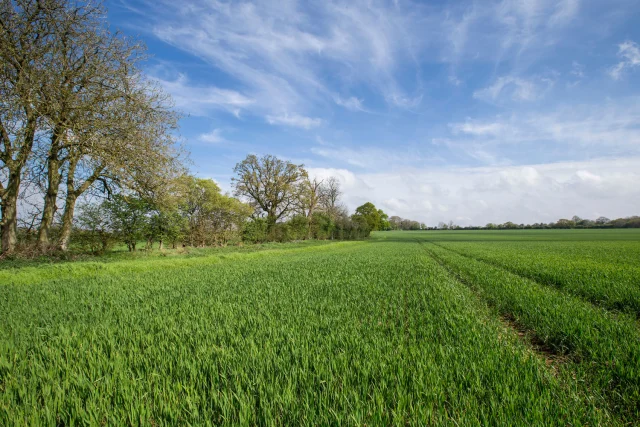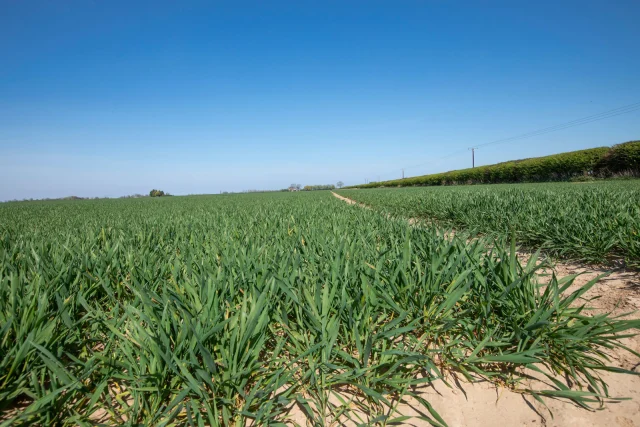Published on 27th October 2020
Local Insights
5 agronomy tasks for November and beyond in the South West

Matt Siggs examines what’s left for growers to do this November and adds a few suggestions for consideration over winter.
5 agronomy tasks for November and beyond in the South West Content
Crop Progress
Devon and Cornwall have had more rain than further east along the south coast, so drilling has been a bit catchy. There was a drier spell in mid-October that allowed some good progress, and we’re probably around 70% drilled up with wheat as we approach the end of October.
Further along the south coast across Somerset, Dorset and into Hampshire, drilling progress is further along with perhaps 90% of the wheat area now drilled, with 40-50% of that done in September.
Oilseed rape is looking healthy, with crops having 6 true leaves and above at the end of October. We are starting to see some cabbage stem flea beetle larval entry points now, but the plants look big and strong enough at the moment.
Matt’s agronomy tips for November
1. Keep monitoring for aphids transmitting BYDV
There have not been many reports of aphid sightings as yet, even though the T-Sum calculation for some crops has reached the 170 day degrees threshold. That could be due to aphids being bad flyers and the weather in October being wet and windy, although in the south-west temperatures have been above 11C threshold for aphid flights for at least some of each day in October, according to the AHDB T-Sum calculator.
But it is important to keep monitoring, looking at the Starcross aphid trap data and having an insecticide programme ready to go, especially on fields with higher risk on the coast where we won’t get frosts for a while.
2. Prioritise weed control programmes as soon as possible
Hopefully growers with fields with higher black-grass problems, prioritised getting these sprayed with pre-emergence residual herbicides within 48 hours of drilling, although with drilling a focus and weather windows at a premium this might not have been achieved.
Where you have drilled and haven’t been able to spray at pre-emergence, it is still important to come back in with an autumn residual. That’s where the new metribuzin-containing products come into their own as metribuzin gives more contact activity on grassweeds.
So a 0.5 L/ha of either Alternator MET or Octavian MET (both flufenacet + diflufenican + metribuzin) plus 0.3 L/ha of Liberator (flufenacet + diflufenican) to top up flufenacet levels will do a great job on meadowgrasses and difficult grassweeds. Metribuzin also adds quite a bit on groundsel control, which is useful.
If you are still to drill, particularly on land with grassweed issues, then a pre-emergence of Liberator + Proclus (aclonifen) is the best option.
One question I’ve been asked a lot this autumn is about volunteer spring barley control in wheat, as obviously there was a lot more spring barley grown last season. It’s not an easy one, but autumn control is easier than in the spring because the barley is less vigorous. If you wait until the spring with a Pacifica (mesosulfuron + iodosulfuron) it can be asking a bit much of the product.
In the autumn, Atlantis OD (mesosulfuron + iodosulfuron) is a good option. You can also use 1.5 L/ha of Hamlet (mesosulfuron + iodosulfuron + diflufenican), but avoid using them on any wheat that is susceptible to damage, such as crops that have been mauled in, or are not frost-hardened. But if the crop is looking healthy and actively growing, then 1.2 L/ha of Atlantis OD + Biopower is probably your best shot.
3. Check oilseed rape disease levels using SpotCheck
There is some Phoma around in oilseed rape crops, but not at threshold in any crops from what I’ve seen and heard.
Growers are weighing up what to do around oilseed rape fungicide programmes. If you aren’t sure whether you have light leaf spot or Phoma in your crops the Bayer SpotCheck service is there to help.
Light leaf spot is one of those diseases that can be there latently, so you don’t see visible symptoms in the crop. If you pick it up earlier at this time of year you’ve got a chance to treat it protectantly when the products are more effective at controlling it.
If you are going to treat this autumn, Proline (prothioconazole) covers both light leaf spot and Phoma.
4. Start planning for cover crop destruction
Where you’re growing cover crops ahead of a spring crop, start planning for how and when you’re going to destroy the cover crop ahead of drilling. With some of the more vigorous broad-leaved cover crops, such as vetches and phacelia, for example, you need to leave at least four weeks between spraying off and planting the spring cash crop.
The premium Bayer Roundup products with the better formulation and surfactants do work a little bit quicker than other glyphosate products, but when spraying off in winter it’s still best to give as much time as possible to work. In grassweed situations it also helps to give time for a second application to get maximum amount of grassweed kill before drilling.
5. Consider seed treatments and nematicides where appropriate for early potato plantings
With potato plantings in the south west potentially starting in December under plastic, it’s worth considering whether you need protection from diseases such as black or silver scurf, common scab or nematode pests.
The next season will be the last you will be able to use Emesto Prime (penflufen). There is no issue with the marketability of potatoes treated with Emesto, but there is a maximum planting population of 5t/ha, which might be prohibitive for some salad crops. Where it can be used, it gives good protection against black and silver scurf, which are important for those first early and salad quality potato markets.
The biological product, Serenade (Bacillus subtilis) has also shown some great results for skin finish, especially against common scab and improvements in uniformity of tubers. It is available to use under an Extension of Authorisation for Minor Use (EAMU).
The nematicide Velum Prime (fluopyram) can be used alone on fields with counts of 10 potato cyst nematode eggs/g soil, as well as in combination with granular nematicides with higher egg counts.
It also delivers useful physiological benefits for black dot control and enhanced establishment, and could help with early planted potatoes in colder soils that need a bit of a lift. Its harvest interval makes it possible to use in earlies with a 120 day cropping cycle.



